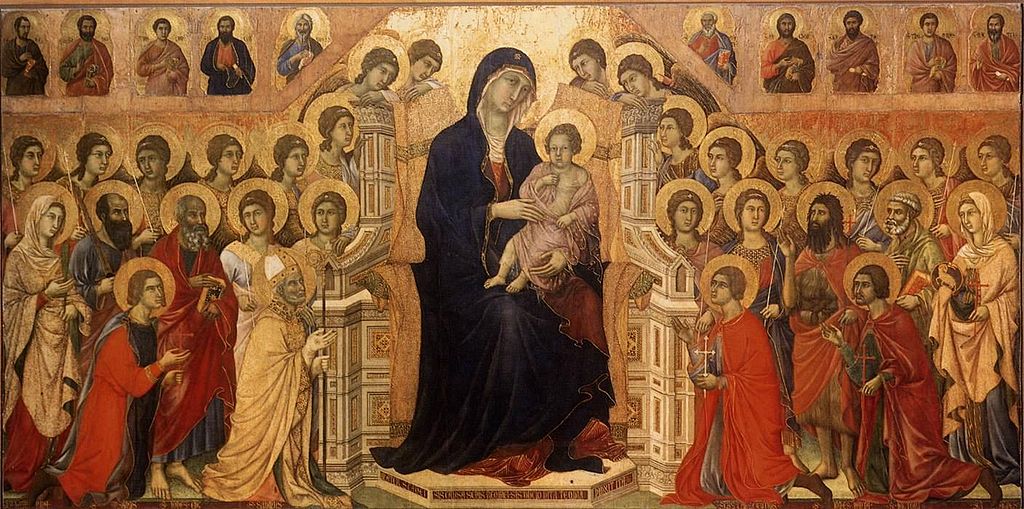The faithful and their irrepressible instinct for commemorating saints
Ttony of The Muniment Room has a regular feature in which he reproduces the current list of celebrations, or Ordo for the current week of the pre-1910 calendar; this was the the liturgical calendar before the major reforms of Pope Pius XII in the document Cum nostra hac aetate of 1955. Over the weeks, it is fascinating to see how many extra prayers for saints, or "commemorations" there used to be. Here is the Ordo for the week beginning Saturday 10 August, a relatively quiet week:
Note for example, that on Tuesday the Mass of the day was the celebration of the day within the Octave of the feast of St Lawrence which had been celebrated on the 10th of August. Then for the collect, the secret and the postcommunion, there was a second prayer for the feast of Saints Hippolytus and Cassian, Martyrs. Then there was the prayer Concede, a prayer in honour of Our Lady so that there was a third prayer to make up the number of prayers which was usually an odd number. ("The indulgence begins" is fascinating, but not to the point here - see this post from Ttony again for an explanation.)
The rules were not straightforward, but any priest was able to refer to the local diocesan or religious Ordo (the detailed liturgical calendar for his diocese or order) and check which prayers were to be said on any particular day. Some clergy and MCs were experts at all the rules, while most got to know their way around to some degree. What routinely happened was that a feast that was “outranked” by the feast of the day was commemorated, and depending on the rubrics of the time, there is often a commemoration of the Church, the Pope, and so on.
The rules for commemoration were simplified in 1955; actually they were cut down considerably. A Missal before 1955 will give the standard commemorations, whereas a 1962 missal will only include the prayers as optional ones according to some more stringent rules.
To use the jargon of modern psychology, the "presenting reason" for this set of simplifications was that:
"Priests today especially those who have the care of souls, are burdened with various new apostolic duties, so that they can scarcely recite the divine Office with the tranquillity of mind which it requires."This is a "presenting reason" because it is manifestly not the real reason. Even if it were genuinely necessary to simplify the Divine Office still further after the drastic pruning of St Pius X, it could hardly be said that cutting down a couple of collects at Mass would offer priests a significantly greater "tranquillity of mind" while burdened with all their new apostolic duties. The reform, in the waning years of the life of Pope Pius XII, was obviously a part of the pruning-down which was building up to its radical conclusion in the rubrics of the modern rite in 1970.
The ordinary faithful don’t share the desire for austerity in commemorating saints. Most of the People of God would be happy to be reminded of various lesser known Saints and would be glad to celebrate them in that rich way of the old Roman Rite, by acknowledging them in short prayers and paying them devotion even though they are not the main “feature” of the day.
One way in which this devotional instinct has remained in a vestigial manner, is in the “Eucharistic Prayer 3” of the modern Roman Rite. It is allowed to add in "with Saint N." and the rubric indicating that N. referred to "the Saint of the day or Patron Saint." (Sancto diei vel patrono.) We are not in the realm of major abuses here, and I'm not going to make a fuss, but it is notable that priests are instinctively acting ultra vires in response to their own devotion and that of their people, when adding priests that are not strictly in the calendar of official patrons of the Church, or of the ecclesial body that is celebrating. Hence a devout priest might add one of our Anglo-Saxon or Celtic saints, an English or Welsh martyr, a martyr from the Mexican, Spanish, Japanese or other persecution, a saint from the old calendar, or some modern favourite. Those saints of ours, you just can't keep 'em down
It does seem to me that there is a sound instinct among the faithful, priests and laity, to commemorate the glorious company of saints that we have, without needing to worry about the supposedly frightful spectre of crowding the calendar with saints that have to be ranked on a strictly one per day (or one group per day) basis. In the melting-pot which is modern liturgical discussion, there is surely room for some tweaking of Pope Pius XII's Cum nostra haec aetate of 1955 which took what is in effect a puritanical approach to the celebration of the flowering of saints: a flowering that we have seen not least thanks to the thousands of martyrs of the past century and a half.
Paradoxically, the internet itself has made it much more popular among the faithful to research and take an interest in saints who were dismissed in the second half of the twentieth century as being unworthy of attention, lacking in cultus or rejected as no longer loved. There does seem to be a whiff of late, liturgical Jansenism in denying people the joy of so many commemorations.



